"We will restore the palace as it was before, we owe it that," says Roderick Sursock Cochrane in the guesthouse on the grounds of the Sursock Palace, his family home in Beirut.
He has been living there with his wife, Mary, and daughter, Ariana, since the devastating port blast in August 2020.
As well as levelling parts of East Beirut, the force of the explosion shattered almost every window and door in the three-storey palace. Delicate plasterwork was torn from the ceilings and statues lost their heads. When the roof was blown off, antique books in the library were left exposed.
Sursock Cochrane's mother, the 98-year-old Lady Yvonne Cochrane who had long fought to preserve Beirut's heritage, was in the palace on the day of the blast and sustained serious injuries. She died a month later, one of the more than 200 victims who lost their lives.
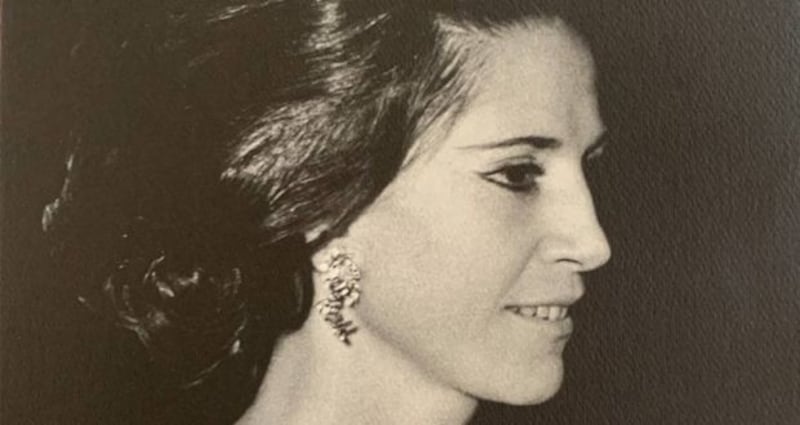
The Lebanese aristocrat had been married to Desmond Cochrane, an Anglo-Irish baron who inherited the Woodbrook Estate in Wicklow and died in 1979. Lady Cochrane lived at the Sursock Palace throughout her life though, including during the civil war which raged through Lebanon from 1975-1990.
“It is unbelievable how dedicated she was to saving Lebanon’s heritage,” says Nabil Saidi, a family friend of the Sursocks.
“Whenever I saw her, she was always campaigning and talking about homes to be saved.”
After acquiring a home on North Great George's Street in Dublin, Saidi became a member of the Irish Georgian Society and organised a trip to Lebanon and Syria for the society in 1999 (before the Syrian war made such a thing impossible).
While the tour was in Lebanon, Lady Cochrane delivered a lecture on the preservation of heritage homes in Lebanon and hosted a dinner for the visiting group on the terrace of the palace which included Lebanese politicians and society figures including Dory Chamoun, son of Lebanese president Camille Chamoun.
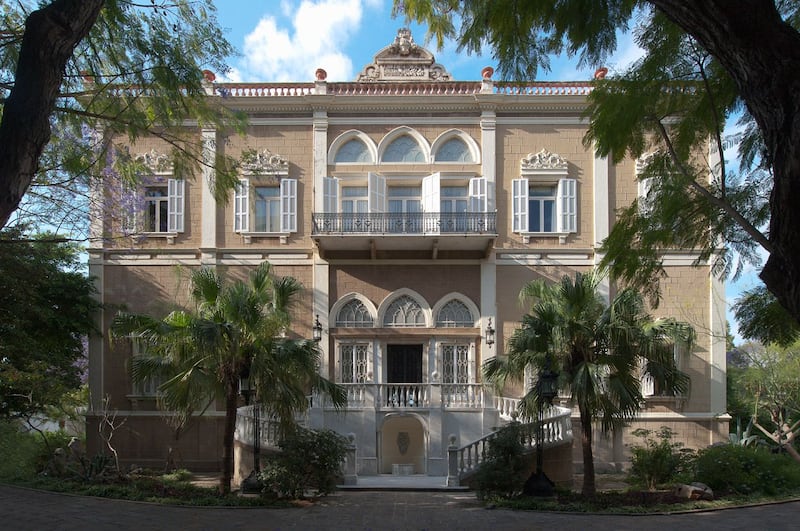
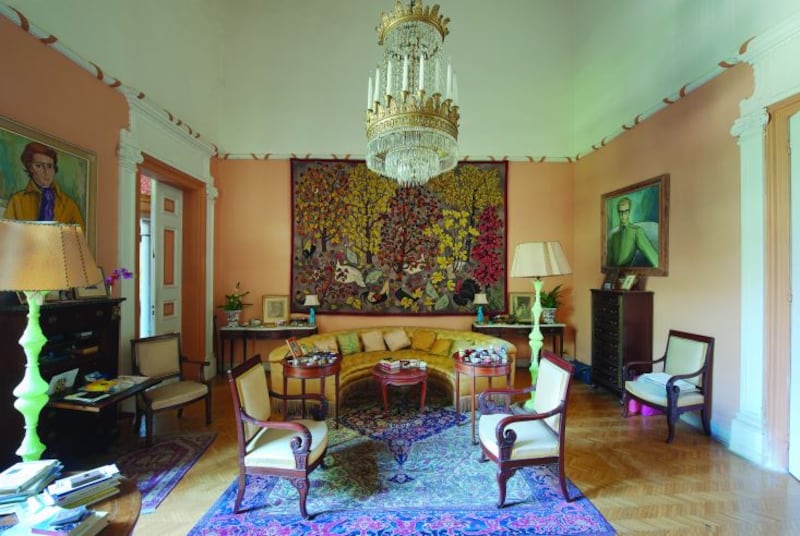
Chamoun’s younger brother, Dany, had been assassinated a few years previously at the end of the civil war and Saidi recalls a moving moment at the dinner when one of the Irish visitors sang Danny Boy. Chamoun, then a prominent politician in Lebanon himself, extended an invitation to the group to visit his family’s residence in the Chouf mountains.
The Sursocks were originally traders in the Ottoman Empire. Their influence is hinted at by the frequent appearance of their name on buildings around Achrafieh, the wealthy neighbourhood which the palace occupies. The address is, in fact, on Rue Sursock.
Sursock Cochrane’s great grandparents, Anastasia and Moussa Sursock, built the residence in 1860 with the assistance of the Balyans, a family of Turkish-Armenian architects who worked for the Ottoman sultans.
A large, landscaped garden surrounds the palace – a rarity in a part of Beirut where any open space is vulnerable to having an apartment block built on it.
The first and second floor of the building have central salons hedged by marble arcades. The lower salon was more protected from the force of the port blast than the upper one, which requires extensive restoration work to the ceiling and support structures.
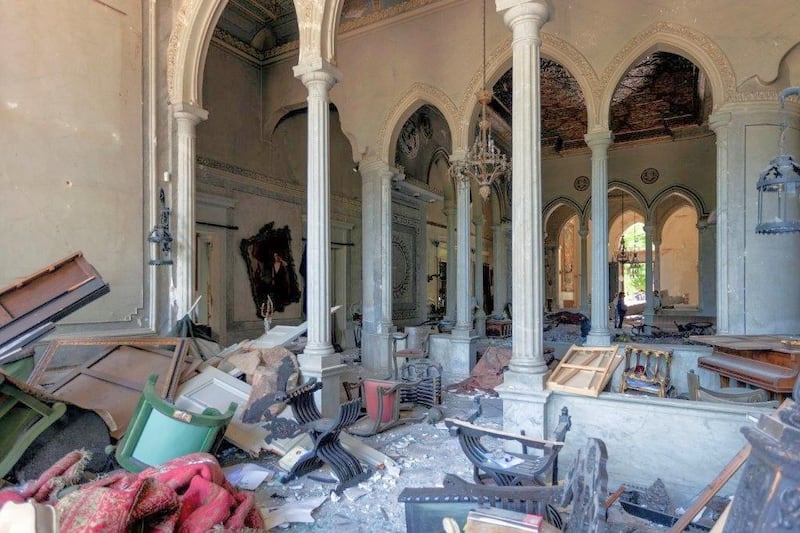
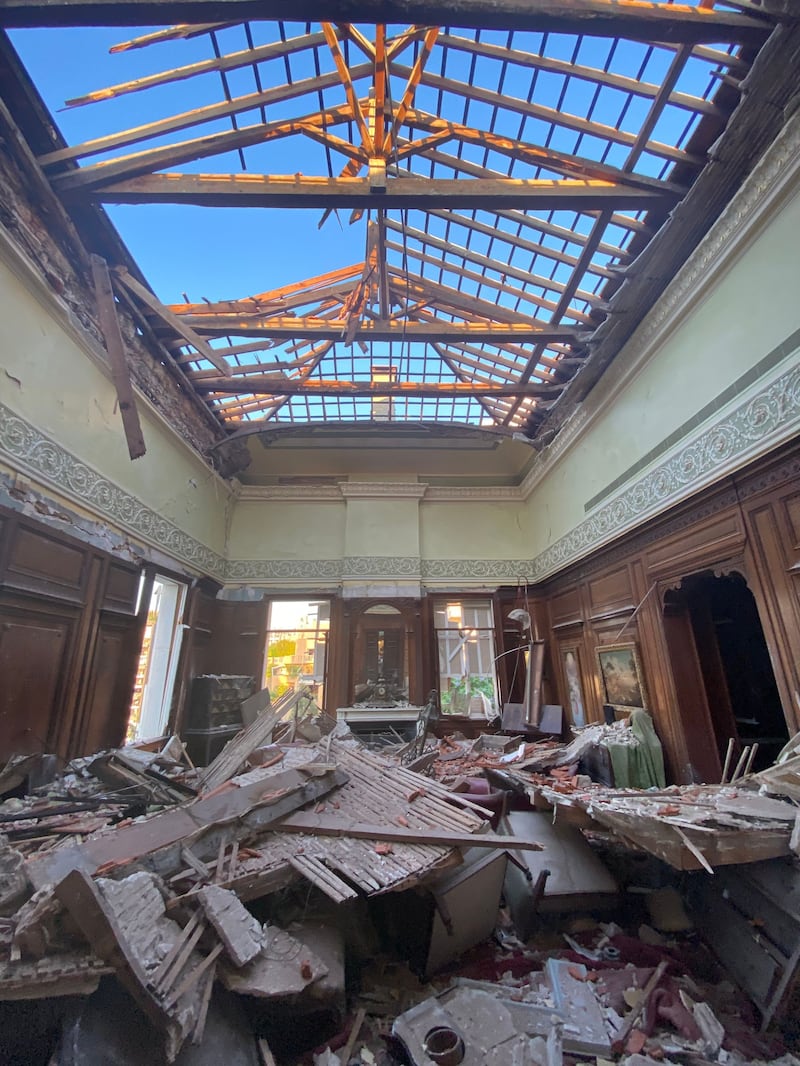
Several living rooms, dining rooms, bedrooms and a library were divided into various apartments when the palace was home to more Sursocks.
“Moussa had lots of children,” says Mary Sursock Cochrane, “and everyone wanted their own bedroom and sitting room.”
When Lady Cochrane was younger and the house was full of various aunts, they had an open table for lunch.
“Every diplomat or anyone of any importance visiting Beirut would come and visit my grandaunts, my grandmother, or my mother’s first cousin, Linda Sursock,” says Richard Sursock Cochrane.
Despite her grandfather’s many children, Lady Cochrane ended up as the sole inheritor of the palace.
“My Aunt Isabelle decided to buy all of her brothers and sisters out and give her share [of the palace] to my mother, so she inherited the whole thing,” he says.
Lady Cochrane’s father, Alfred, was an art collector with a taste for 16th and 17th-century Italian paintings and making a statement. In 1915, he commissioned a new door for the palace from Gebran Dimitri Tarazi, a member of an artisan family in Beirut who furnished the homes of Middle Eastern elites.
Inspired by the French archaeologist Émile Prisse d’Avennes and his research on Ancient Egypt, Gebran designed a unique double-leaf brass door for the palace that mixed Egyptian, Damascene, Islamic and Turkish styles.
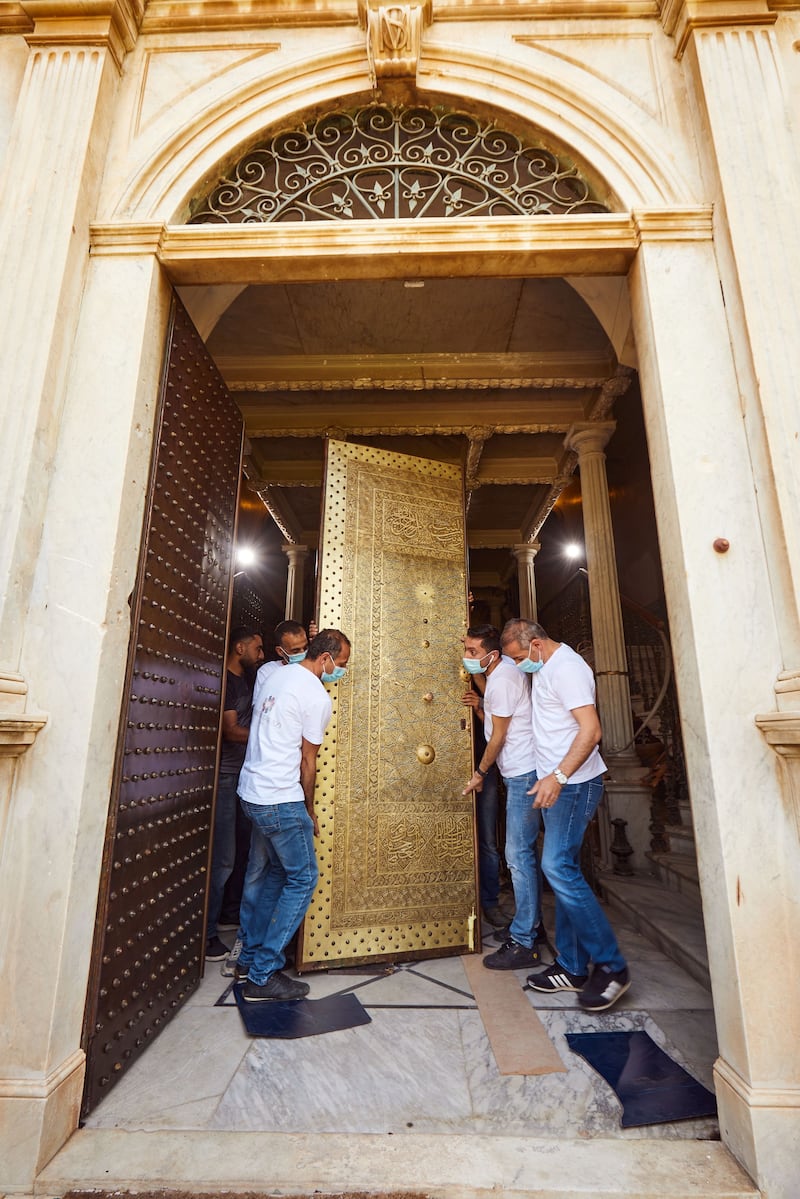
One side of the door was elaborately decorated with floral patterns and Arabic proverbs in calligraphy, while the other side was left without decoration.
“The decorative side used to face outside but was reversed during the [civil] war to protect it,” says Sursock Cochrane.

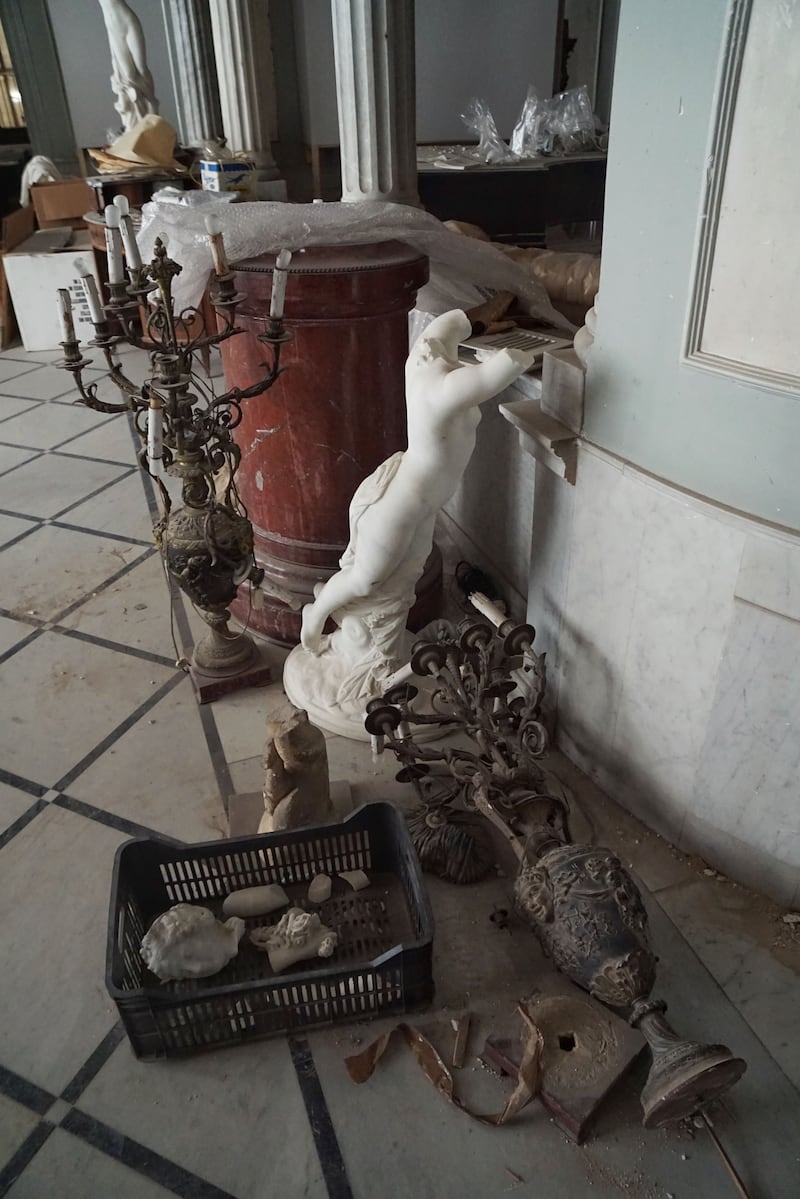
When Gebran’s great-grandnephew, Camille Tarazi, visited the palace after the port blast, he found the leaves of the door, each weighing 150kg, had been broken into numerous pieces by the force of the explosion. With funding from a group in France and Maizon Tarazi, the Tarazi family business, the door was repaired and re-installed before summer.
The damage to the palace’s furniture collection has been assessed by a representative from Mobilier National, the French furniture institute, who visited Beirut earlier this year. Of particular historical importance are the 15th and 16th-century Flemish tapestries amassed by Alfred, as well as several French Aubusson armchairs.
Two priceless artworks by Artemisia Gentileschi, one of the few female artists of the Baroque period, were partly torn in the blast and are being restored in Italy.
In the aftermath of the port blast “everyone came through to us”, says Mary Sursock Cochrane, “every embassy, every NGO”. So far only a few organisations have committed to fund the extensive conservation work required.
“In a way, it felt like we had voyeurs coming through just to have a look. There was probably an intention to help but no funds,” she says.
The year leading up to the port blast had already placed significant pressure on the resources available to maintain the palace and its contents.
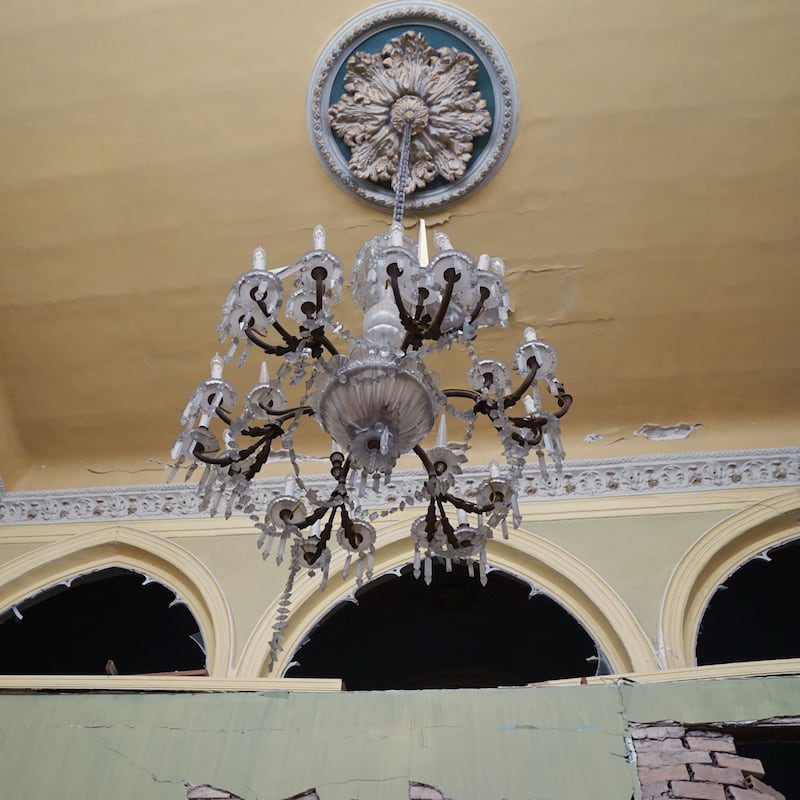
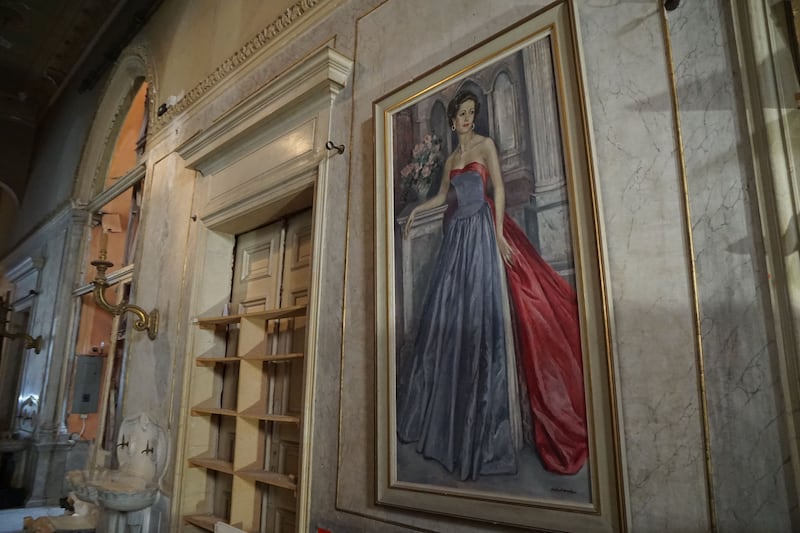
When the Covid-19 pandemic hit, hyperinflation and a banking sector teetering on the brink of collapse were already ravaging the Lebanese economy. The pandemic led to the cancellation of private events normally held at the palace, while the economic crisis diminished revenue from the family’s rental properties in Beirut.
Given that the restoration project will cost millions, the family have decided to convert the palace into a private museum. It will remain a family home but also serve as a cultural centre, hosting exhibitions and tour groups.

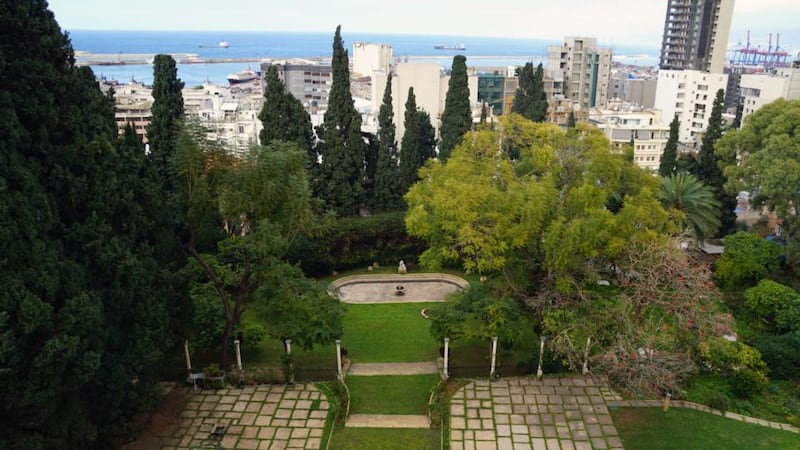
RestArt Beirut is assisting with raising the palace’s transformation to a private museum and a classical concert was held at the palace earlier this year to raise funds.
“The palace is very prestigious but there is a lot of responsibility attached to it,” says Sursock Cochrane. “I feel like I am the caretaker of the family or the curator perhaps.”










